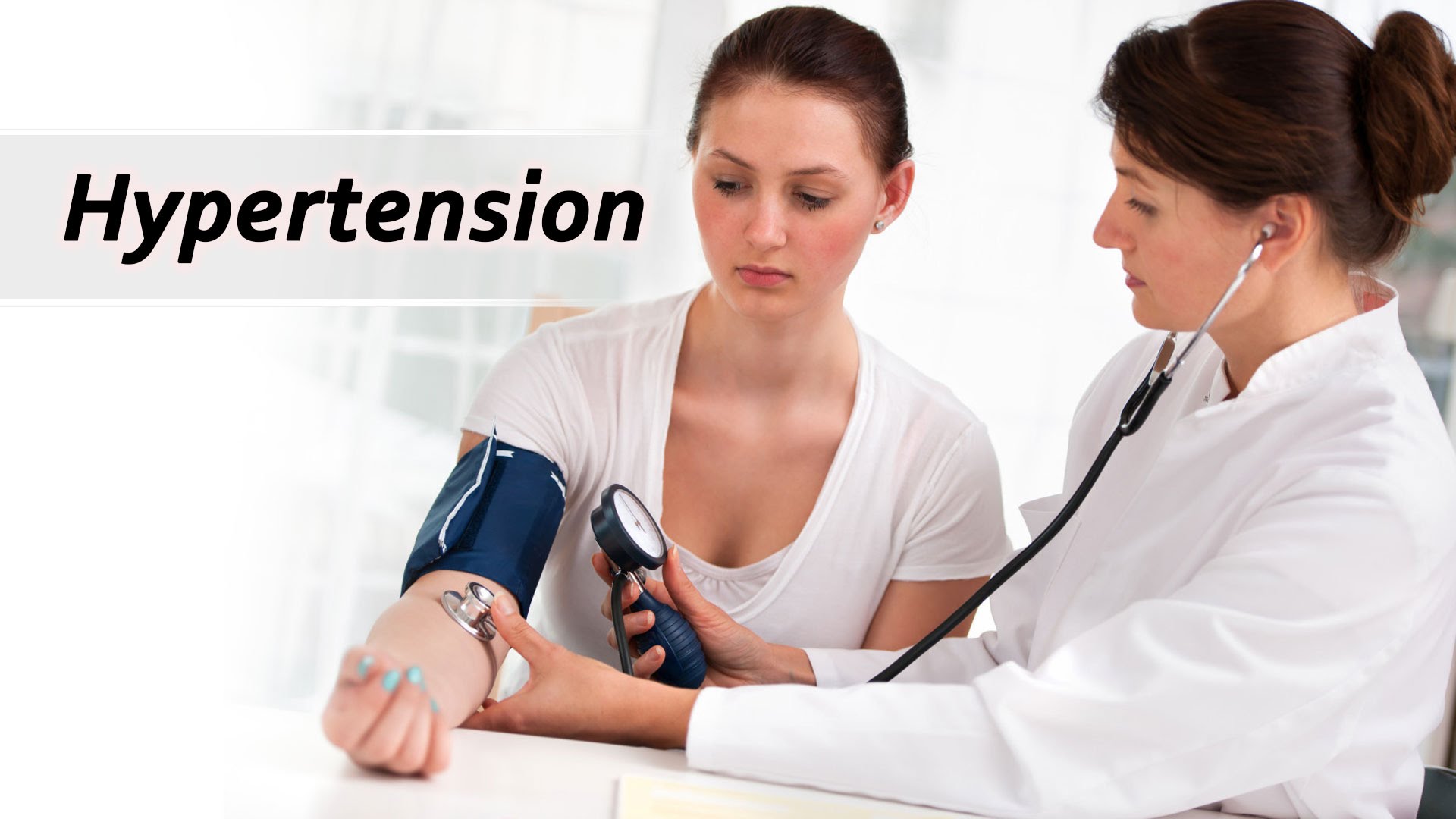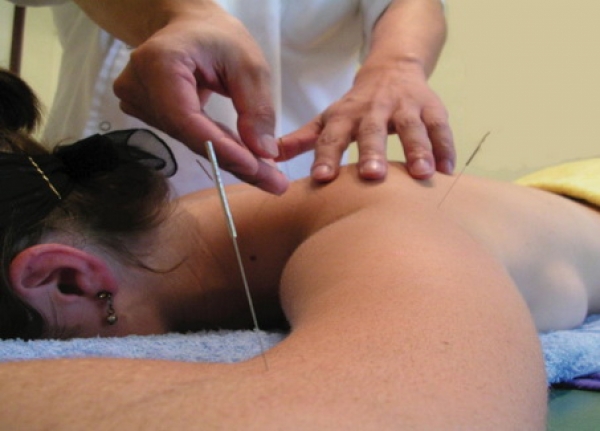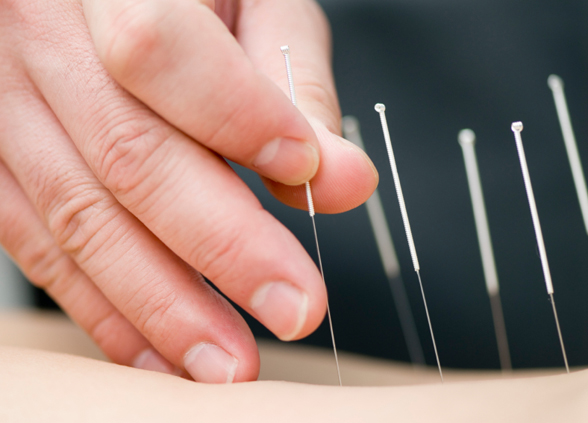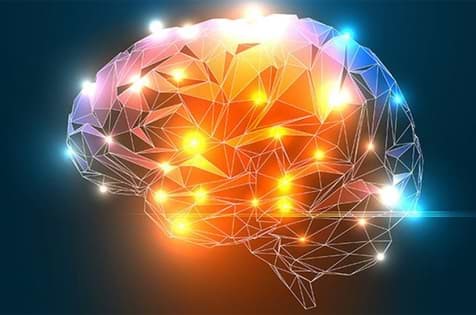Hypertension (HTN or HT), also known as high blood pressure, is a chronic medical condition characterized by elevated blood pressure, which means that blood pressure in the arteries is persistently elevated. The high value causes the heart to pump at a faster pace compared to the normal rhythm in order to propel blood into blood vessels.
There are two types of blood pressure: systolic blood pressure (blood pressure in the arteries during the cardiac muscle contraction) and diastolic blood pressure (blood pressure during relaxation of cardiac muscle).
Pressures in the blood vessels or within the heart chambers can be measured either by direct methods, but only rarely and only in some cases, as it requires the insertion of a catheter into blood vessels, either by an indirect method, determining the arterial wall tension by using a device called sphygmomanometer.
Normal blood pressure at rest is within the range of 100–140 millimeters mercury (mmHg) in systolic blood pressure (the upper limit) and 60–90 mmHg in diastolic blood pressure (the lower limit). High blood pressure is present if the resting blood pressure is persistently at or above 140/90 mmHg for most adults.
High blood pressure is classified as either primary (essential) high blood pressure or secondary high blood pressure. Approximately 90-95% of cases are categorized as “primary hypertension”, which means high blood pressure with no obvious underlying medical cause. The remaining 5–10% of cases is categorized as secondary high blood pressure, defined as high blood pressure caused by other conditions that affect the kidneys, arteries, heart or endocrine system.
Hypertension is a major risk factor for heart attack (myocardial infarction), heart failure, aneurysms of the arteries (e.g. aortic aneurysm), peripheral arterial disease and is a cause of chronic kidney disease. Even moderate elevation of arterial blood pressure is associated with a shortened life expectancy. Dietary and lifestyle changes can improve blood pressure control and decrease the risk of associated health complications. However, drug treatment is often necessary in people for whom lifestyle changes prove ineffective or insufficient.
Classification of blood pressure
In people aged 18 years, hypertension is defined as a systolic and/or a diastolic blood pressure measurement which consistently exceeds the accepted normal value (currently 139 mmHg systolic, 89 mmHg diastolic).
If measurements are derived from 24-hour ambulatory or home monitoring, lower thresholds are used (135 mmHg systolic or 85 mmHg diastolic).
Recently, international hypertension guidelines have also created categories below the hypertensive range in order to indicate a continuum of risk with higher blood pressures in the normal range.
JNC7 (2003) uses the term “prehypertension” for blood pressure in the range 120–139 mmHg systolic and/or 80–89 mmHg diastolic, while ESH-ESC Guidelines (2007) and BHS IV (2004) use optimal, normal and high normal categories to classify blood pressure below 140 mmHg systolic and 90 mmHg diastolic.
Hypertension is also classified into the following categories:
- Hypertension stage I;
- Hypertension stage II;
- Isolated systolic hypertension.
Isolated systolic hypertension refers to elevated systolic blood pressure with normal diastolic blood pressure and is common in the elderly.
The ESH-ESC Guidelines (2007) and BHS IV (2004) define a third stage (stage III hypertension), where the systolic blood pressure exceeds 179 mmHg or the diastolic blood pressure exceeds 109 mmHg.
Hypertension is classified as “resistant” if medications do not reduce blood pressure to normal levels.
Newborns, children and adolescents
High blood pressure in newborns is a rare condition and occurs in around 0.2 to 3% of newborns. In healthy newborns, blood pressure measurement is not part of routine assessment procedures. Hypertension is more common in high risk newborns. When deciding if a blood pressure is normal in a newborn, a variety of factors, such as gestational age, postconceptional age and birth weight needs to be taken into account.
Hypertension may occur often in children and adolescents (2-9% depending on age, sex and ethnicity) and is associated with long-term health risks. It’s recommended that children aged 3 years and older have blood pressure measurement at least once at every health care visit.
Before diagnosing a child as hypertensive, high blood pressure must be confirmed on repeated visits. Blood pressure rises with age in childhood and, in children, hypertension is defined as an average systolic or diastolic blood pressure on three or more occasions equal or higher than the 95th percentile appropriate for the sex, age and height of the child. In children, prehypertension is defined as a systolic blood pressure that is greater than or equal to the 90th percentile, but less than the 95th percentile.
In adolescents, it has been proposed that hypertension and pre-hypertension are diagnosed and classified using the same criteria as in adults.
Signs and symptoms
Hypertension is rarely symptomatic and is usually identified during examinations or when seeking healthcare for an unrelated health problem. Some people with high blood pressure report headaches (particularly at the back of the head and in the morning), as well as lightheadedness, vertigo, tinnitus (buzzing or hissing in the ears), altered vision or fainting episodes.
On physical examination, hypertension may be may be suspected when hypertensive retinopathy is detected during the optic fundus examination in the back of the eye by ophthalmoscopy (funduscopy). The severity of the changes typical of hypertensive retinopathy is graded from I–IV. However, grades I and II may be difficult to differentiate. The results of ophthalmoscopy may also indicate the duration of the hypertension.
Secondary hypertension
Certain specific additional signs and symptoms may suggest secondary hypertension, i.e. hypertension due to an identifiable cause, such as renal failure or endocrine diseases.
For example, truncal obesity, glucose intolerance, moon face (moon facies or plethoric facies), a hump of fat behind the neck/shoulder, and purple abdominal stretch marks suggest Cushing’s syndrome.
Hypertension may also be caused by thyroid disorders and acromegaly, presenting specific signs and symptoms. Abdominal bruit may indicate renal artery stenosis (a narrowing of arteries that carry blood to one or both of the kidneys). A decreased blood pressure in the lower extremities or delayed or absent femoral arterial pulses may indicate coarctation of the aorta (narrowing of the aorta at a short distance from the heart). High blood pressure with intense symptoms, such as headache, palpitations, pallor and sweating may suggest the risk of pheochromocytoma.
Hypertensive crisis
Severely elevated blood pressure (equal to or greater than a systolic 180 or diastolic of 110), sometimes defined as malignant or accelerated hypertension, is sometimes referred to as a “hypertensive crisis”. Blood pressure exceeding these levels confers a high risk of complications. People with blood pressures in this category may experience no symptoms (asymptomatic patients) but are more likely to report headaches (22% of cases) and dizziness compared to the general population.
Other symptoms of hypertensive crisis may include vision deterioration due to retinopathy, breathlessness due to heart failure, or a general feeling of malaise due to kidney failure.
Most people suffering from hypertensive crises usually have high blood pressure, but additional triggers may have led to a sudden rise.
A “hypertensive emergency”, formerly called “malignant hypertension” occurs when there is evidence that one or more organs are directly affected as a result of severely elevated blood pressure. This may include hypertensive encephalopathy, caused by brain swelling and dysfunction, and characterized by headaches and an altered level of consciousness (confusion or drowsiness). Retinal papilledema and fundal bleeds and exudates are another sign of target organ damage. Chest pain may indicate heart muscle damage (which may lead to myocardial infarction) or sometimes aortic dissection, the tearing of the inner wall of the aorta. Breathlessness, cough, and the blood-tinged sputum are characteristic signs of pulmonary edema, the swelling of lung tissue due to left ventricular failure an inability of the left ventricle of the heart to pump blood from the lungs into the arterial system. Rapid deterioration of kidney function (acute kidney disease) as well as microangiopathic hemolytic anemia (loss of red blood cells through destruction) may also occur.
In such situations, rapid reduction of the blood pressure is necessary to stop ongoing organ damage. In contrast, there is no evidence that blood pressure should be lowered rapidly in hypertensive urgencies, where there is no evidence of direct organ damage. Over aggressive reduction of blood pressure is not without risks. In hypertensive urgencies, blood pressure should be reduced gradually over 24 to 48 hours by administering oral medications.
Pregnancy
Hypertension occurs in approximately 8–10% of pregnancies. Most women with hypertension in pregnancy have preexisting primary hypertension. High blood pressure in pregnancy may be a first sign of preeclampsia, a serious condition of the second half of pregnancy and the last weeks before giving birth. The diagnosis of preeclampsia is characterized by increased blood pressure and the presence of protein in the urine. Preeclampsia occurs in 5% of pregnancies and is responsible for 16% of all maternal deaths globally. Preeclampsia also doubles the risk of perinatal mortality.
Usually, there are no symptoms in preeclampsia and it is detected by routine screening. When symptoms of preeclampsia occur, the most common are headaches, visual disturbances (often “flashing lights”), vomiting, abdominal pain (pain over the stomach) and edema (swelling). Preeclampsia can sometimes evolve into a life-threatening condition called eclampsia.
Eclampsia is a hypertensive emergency and has several serious complications. These complications include vision loss, brain swelling, tonic-clonic seizures or convulsions, kidney failure, pulmonary edema, and disseminated intravascular coagulation (a blood clotting disorder).
Infants and children
Weight faltering, seizures, irritability, lack of energy and infant respiratory distress syndrome / difficulty breathing may be associated with hypertension in neonates and young infants. In older children, hypertension can cause headaches, unexplained irritability, fatigue, weight faltering, blurred vision, nosebleeds and facial paralysis.
Complications
Hypertension is the leading risk factor for premature death that could be prevented globally. This chronic medical condition increases the risk of coronary artery disease (ischemic heart disease), stroke, peripheral vascular disease and other cardiac diseases: heart failure, aortic aneurysms, diffuse atherosclerosis and pulmonary embolism.
Hypertension is also a risk factor for cognitive impairment, dementia and chronic kidney disease. Other complications may include hypertensive retinopathy and hypertensive nephropathy.
Causes
Primary hypertension
Primary hypertension (also called essential hypertension) is the most common type of hypertension, affecting 90-95% of hypertensive patients. In almost all contemporary societies, blood pressure rises with aging, and the risk of becoming hypertensive in later life is considerable.
Hypertension occurs as a result of a complex interaction of genes and environmental factors. Numerous common genes with small effects on blood pressure have been identified, as well as some rare genes with large effects on blood pressure, but the genetic basis of hypertension remains poorly understood.
Several environmental factors influence blood pressure. Life factors that lower blood pressure include reduced salt intake, increased consumption of fruits and low-fat foods (dietary approaches to stop hypertension – DASH diet).
Physical activity, weight loss and reduced consumption of alcoholic beverages will also help to lower blood pressure. The possible role of other factors such as stress, caffeine consumption and vitamin D deficiency are less clear.
Insulin resistance, which is common in obesity and is a component of Syndrome X (or the Metabolic Syndrome) is also thought to contribute to the occurrence of hypertension. Recent studies have also included events in childhood (low birth weight, maternal smocking and lack of breastfeeding) as risk factors for primary hypertension in adults (adult essential hypertension). However, the mechanisms linking these exposures to adult hypertension remain unknown.
Secondary hypertension
Causes of secondary hypertension are unknown. Kidney disease is the most common secondary cause of hypertension. Hypertension can also be caused by endocrine conditions, such as Cushing’s syndrome, hyperthyroidism, hypothyroidism, acromegaly, Conn’s syndrome or hyperaldosteronism, hyperparathyroidism and pheochromocytoma. Other causes of secondary hypertension include obesity, sleep apnea, pregnancy, coarctation of the aorta, excessive licorice consumption and certain prescription medicines, herbal treatments and illegal drugs.
Pathophysiology
In most people with established essential (primary) hypertension, increased resistance to blood flow (total peripheral resistance) leads to high blood pressure, while the cardiac output remains normal.
There is evidence that some younger people with prehypertension or “borderline hypertension” have a high cardiac output and normal peripheral resistance. This condition is called hyperkinetic borderline hypertension. These individuals develop the typical features of established essential hypertension in their adult life as their cardiac output falls and peripheral resistance rises with age.
There is no unanimity whether this pattern is typical for all those who ultimately develop hypertension. The increased peripheral resistance in established hypertension can be mainly attributed to structural narrowing of small arteries and arterioles. A reduction in the number or density of capillaries may also contribute to peripheral resistance.
Hypertension is also associated with decreased flexibility of peripheral veins, which may increase venous return, increase cardiac preload and, ultimately, cause diastolic dysfunction. Whether increased active arteriolar vasoconstriction plays a role in established essential hypertension is unclear.
Differential blood pressure or pulse pressure (the difference between systolic and diastolic blood pressure) is frequently increased in older people with hypertension. This tension may involve an abnormally high systolic pressure, but diastolic pressure may be normal or low. This condition is called isolated systolic hypertension. The high pulse pressure in elderly people with hypertension or isolated systolic hypertension is explained by increased arterial stiffness, which typically accompanies aging and may be exacerbated by high blood pressure.
Several mechanisms have been proposed as a cause for the rise in peripheral resistance in hypertension. Most evidence implicates one or both of these causes:
- Disturbances in the kidneys’ salt and water handling, particularly abnormalities in the intrarenal renin-angiotensin system;
- Abnormalities of the sympathetic nervous system.
These mechanisms are not mutually exclusive and it seems that both contribute to some extent in most cases of essential hypertension. It has also been suggested that endothelial dysfunction and vascular inflammation may also contribute to increased peripheral resistance and vascular damage in hypertension.
Diagnosis
The diagnosis of hypertension is established if the patient has a persistently high blood pressure. Traditionally, three separate sphygmomanometer measurements at monthly intervals are required in order to confirm the diagnosis.
Initial assessment of the hypertensive patients should include a complete medical history and physical examination. Due to the permanent ambulatory blood pressure monitors and home blood pressure machines, the importance of avoiding an erroneous diagnosis in patients who have white coat hypertension has led to a change in protocols.
In the UK, current best practice is to perform ambulatory measurements following a single raised clinic reading. Another method is subsequent home blood pressure monitoring over the course of 7 days, but this is not the ideal method.
Once the diagnosis of hypertension has been established, doctors should attempt to identify the underlying cause based on risk factors and other symptoms, if present. Secondary hypertension is more common in preadolescent children, with most cases caused by kidney disease.
Primary (essential) hypertension is more common in adolescents and has multiple risk factors, including obesity and a family history of hypertension. Laboratory tests can also be performed in order to identify possible causes of secondary hypertension, and to determine whether hypertension has caused heart, eye or kidney disorders. Additional tests for the detection of diabetes and high cholesterol levels are usually performed because these conditions are additional risk factors for the development of heart disease and may require treatment.
Serum creatinine is measured to assess for the presence of kidney disease, which can be either the cause or the result of high blood pressure. Serum creatinine measured alone may result in overestimation of glomerular filtration rate. Recent indications support the use of predictive equations such as the Modification of Diet in Renal Disease (MDRD) formula to estimate glomerular filtration rate (eGFR). eGFR can also provide a baseline measurement of kidney function that can be used to monitor for side effects of certain antihypertensive drugs on kidney function. Urine protein testing, used to detect protein in the urine, is another secondary indicator of kidney disease.
Electrocardiogram (EKG/ECG) is performed to identify any heart abnormalities of the due to high blood pressure. The assay may also reveal whether there is thickening of the heart muscle (left ventricular hypertrophy) or whether the heart has experienced a prior minor disturbance such as a silent heart attack. A chest X-ray or an echocardiogram may also be performed in order to detect signs of heart enlargement or damage to the heart.
Prevention
Many people with hypertension are unaware that they have it. Population strategies are required to reduce the consequences of high blood pressure and minimize the need for antihypertensive drug therapy. Before starting drug therapy, lifestyle changes are recommended in order to lower blood pressure. In 2004, the British Hypertension Society proposed the following lifestyle changes, consistent with those outlined by the US National High BP Education Program in 2002 for the primary prevention of hypertension:
- Maintaining a normal body weight (body mass index 20–25 kg/m2);
- Reducing dietary sodium intake to <100 mmol/ day (<6 g of sodium chloride or <2.4 g of sodium per day);
- Engaging in regular aerobic physical activity such as brisk walking (≥30 min per day, most days of the week);
- Limit alcohol consumption to no more than 3 units per day in men and no more than 2 units per day in women;
- Consume a diet rich in fruit and vegetables (at least five portions per day).
Effective lifestyle modification may lower blood pressure as much as an antihypertensive drug. Combining several lifestyle changes may lead to even better results.
Management of hypertension
Lifestyle modifications
The first type of treatment for hypertension is lifestyle changes, which includes dietary changes, physical exercise and weight loss.
All these changes have been demonstrated to significantly reduce blood pressure in people with hypertension. Even if hypertension is high enough to justify immediate use of medications, lifestyle changes are still recommended in conjunction with medication. Some people claim that various programs intended to reduce psychological stress, such as biofeedback, relaxation or meditation, can help reduce blood pressure. However, such methods haven’t been scientifically demonstrated to be effective, so their quality is generally low.
Reducing the sodium intake in the diet is beneficial. A long term (more than 4 weeks) low sodium diet in Caucasian people is effective in reducing blood pressure, both in people with hypertension and in people with normal blood pressure. Also, the DASH diet, a diet rich in oil fruits (nuts, peanuts almonds, pistachios, etc.), whole grains, fish, poultry, fruits and vegetables and promoted by the National Heart, Lung, and Blood Institute, lowers blood pressure. A major feature of this diet plan is limiting intake of sodium, although the diet is based on foods rich in potassium, magnesium, calcium and protein.
Medications
Certain classes of medications, collectively referred to as antihypertensive medications, are available for treating hypertension. The patient’s cardiovascular risk (including the risk of heart attack or stroke) and blood pressure measurements are taken into account in order to prescribe such medications. Once the drug therapy is initiated, the Seventh National Committee on Hypertension at the National Heart, Lung, and Blood Institute advises doctors to monitor the response to treatment and to assay any medication side effects. Reduction of the blood pressure by 5 mmHg can decrease the risk of stroke by 34% and the risk of ischaemic heart disease by 21%. Reducing blood pressure may also reduce the risk of dementia, heart failure and mortality from cardiovascular disease. The goal of the treatment should be to reduce the blood pressure to less than 140/90 mmHg for most of the patients, and even to lower values for those with diabetes and kidney disease. Some medical professionals recommend levels below 120/80 mmHg. If this lowering blood pressure goal cannot be achieved, additional treatment is required.
Recommendations for choosing medication and for choosing the best treatment for various patient groups have changed over time and differ from country level. The best first line medication is disputed. The Cochrane collaboration, World Health Organization and the United States guidelines support low dose thiazide-based diuretic as first line treatment. British recommendations (the UK guidelines) emphasize calcium channel blockers (CCB) for people over the age of 55 years or if of African or Caribbean family origin. These recommendations support the use of angiotensin converting enzyme inhibitors (ACE-I) as the first line for younger people. In Japan, starting with any one of six classes of medications including: CCB, ACEI/ARB, thiazide diuretics beta-blockers and alpha-blockers is deemed reasonable. In Canada, all these medications but alpha-blockers are recommended as options for the initial treatment.
Medication combinations
The majority of people require more than one medication to control their hypertension. JNC7 and ESH-ESC recommendations support starting treatment with two drugs for patients whose blood pressure is increased by more than 20 mmHg (systolic) or by more than 10 mmHg (diastolic). The preferred combinations are of inhibitors of the renin-angiotensin system and calcium channel blockers or inhibitors of the renin-angiotensin system and diuretics.
- Calcium channel blockers and diuretics;
- Beta blockers and diuretics;
- Dihydropyridine calcium channel blockers and beta blockers;
- Dihydropyridine calcium channel blockers with verapamil or diltiazem;
Unacceptable combinations are:
- Non-dihydropyridine calcium blockers (such as verapamil or diltiazem) and beta-blockers;
- Dual renin–angiotensin system blockade (for example, angiotensin converting enzyme inhibitor + angiotensin receptor blocker);
- Renin–angiotensin system blockers and beta-blockers;
- Beta-blockers and antiadrenergic agents (centrally acting medications).
Combinations of ACE inhibitors or angiotensin II–receptor antagonist, a diuretic and an NSAID (including selective COX-2 inhibitors and non-prescribed medications such as ibuprofen) should be avoided due high risk of acute kidney failure. In the jargon of Australian medical literature, the combination is known as a “triple whammy”. There are tablets containing fixed combinations of two classes of medications. While they are convenient for the people, they should be limited to those who have been established on the individual components.
Elderly
Treating moderate to severe hypertension decreases death rates and related cardiovascular effects (cardiovascular morbidity and mortality) in people over 60 years. In people over 80 years old, drug therapy does not appear to significantly reduce total death rates, but decreases the risk of heart disease. The recommended BP goal is advised as <140/90 mm Hg with thiazide diuretic à the first line medication in the United States. In the revised UK guidelines calcium-channel blockers are advocated as first line with targets of clinic readings <150/90, or <145/85 on ambulatory or home blood pressure monitoring.
Resistant hypertension
Resistant hypertension is defined as hypertension that remains above goal blood pressure, despite the concurrent use of three antihypertensive medications belonging to different drug classes. Recommendations for treating resistant hypertension have been published in the UK and the US.
Probability
In 2000, nearly one billion people or about 26% of the adult population of the world had hypertension. It was common in both developed (333 million) and undeveloped (639 million) countries. However, rates vary significantly in different regions with rates as low as 3.4% (men) and 6.8% (women) in rural India and as high as 68.9% (men) and 72.5% (women) in Poland.
Children
Rate of high blood pressure in children is increasing. In children and especially in adolescents, hypertension is a side effect of another disorder. Regardless of obesity, kidney diseases are the most common cause of hypertension in children (60-70% of cases). Adolescents usually have primary or essential hypertension, which represents 85-95% of cases.
History
Modern understanding of the cardiovascular system began with the work of physician William Harvey (1578–1657). Harvey described the circulation of blood in his book, “De motu cordis” (“On the motion of the heart and blood”). The English clergyman Stephen Hales made the first published measurement of blood pressure in 1733.
However, hypertension, as a clinical entity, was introduced in 1896, with the invention of the cuff-based sphygmomanometer by Scipione Riva-Rocci in 1896. This invention allowed the measurement of blood pressure in the clinic. In 1905, Nikolai Korotkoff improved this technique by describing the Korotkoff sounds that are heard when the artery is ausculated with a stethoscope while the sphygmomanometer cuff is deflated.
Historically, the treatment for what was called “hard pulse disease” consisted in reducing the amount of blood by bloodletting or the application of leeches.
Bloodletting was advocated by The Yellow Emperor of China, Cornelius Celsus, Galen, and Hippocrates. In the 19th and 20th centuries, before the advent of effective pharmaceutical treatments for high blood pressure, three treatment modalities were used, all with numerous side-effects. These modalities included: strict sodium restriction (for example, the rice diet), sympathectomy (surgical removal of parts of the sympathetic nervous system) and pyrogen therapy (injection of substances that were causing fever, indirectly reducing blood pressure).
The first chemical compound for hypertension, sodium thiocyanate, was used in 1900, but was unpopular due to its numerous side effects.
After the Second World War, other remedies and agents were developed. The most popular and effective remedies were tetramethylammonium chloride and its derivatives: hexamethonium, hydralazine and reserpine (derived from the medicinal plant Rauwolfia serpentina). A major breakthrough occurred with the discovery of the first well-tolerated orally available agents. The first was chlorothiazide, the first thiazide diuretic, developed from the antibiotic sulfanilamide, which became available in 1958. This increased salt excretion while preventing fluid accumulation.
A randomized controlled research, sponsored by the Veterans Administration, has compared hydrochlorothiazide plus reserpine plus hydralazine versus placebo. But the trial had to be stopped early, as people in the high blood pressure group, who were not receiving treatment, developed many more complications than patients who were receiving treatment and it was deemed unethical to withhold treatment from them. The study continued by including people with lower blood pressure and has been shown that treatment, even in people with moderate hypertension, more than halved the risk of cardiovascular death. In 1975, the Lasker Special Public Health Award was awarded to the team that developed chlorothiazide.
The results of these studies led to public health campaigns in order to increase public awareness of hypertension and promoted the measurement and treatment of high blood pressure. It seems that these measures have contributed, at least in part, to the observed 50% fall in stroke and ischemic heart disease between 1972 and 1994.
Society and culture
Awareness
The World Health Organization has identified hypertension, or high blood pressure, as the prime cause of cardiovascular mortality. The World Hypertension League (WHL), an umbrella organization of 85 national hypertension societies and leagues, admitted that over 50% of people with hypertension worldwide are unaware of their condition. To address this problem, the WHL initiated a global awareness campaign on hypertension in 2005 and declared May 17 of each year as World Hypertension Day (WHD). Over the past three years, more and more national societies have been engaging in WHD and have been innovative in their activities to convey the message to the public. In 2007, there was a record participation of 47 member countries of the WHL. During the WHD week, these countries have collaborated with local governments, professional societies, NGOs and private industries in order to promote hypertension awareness through media and some public marches. Using mass media such as Internet and television, the message reached more than 250 million people. Given the fact that this action is becoming increasingly popular every year, the WHL is confident that almost all of the 1.5 billion people suffering from hypertension can be reached.








